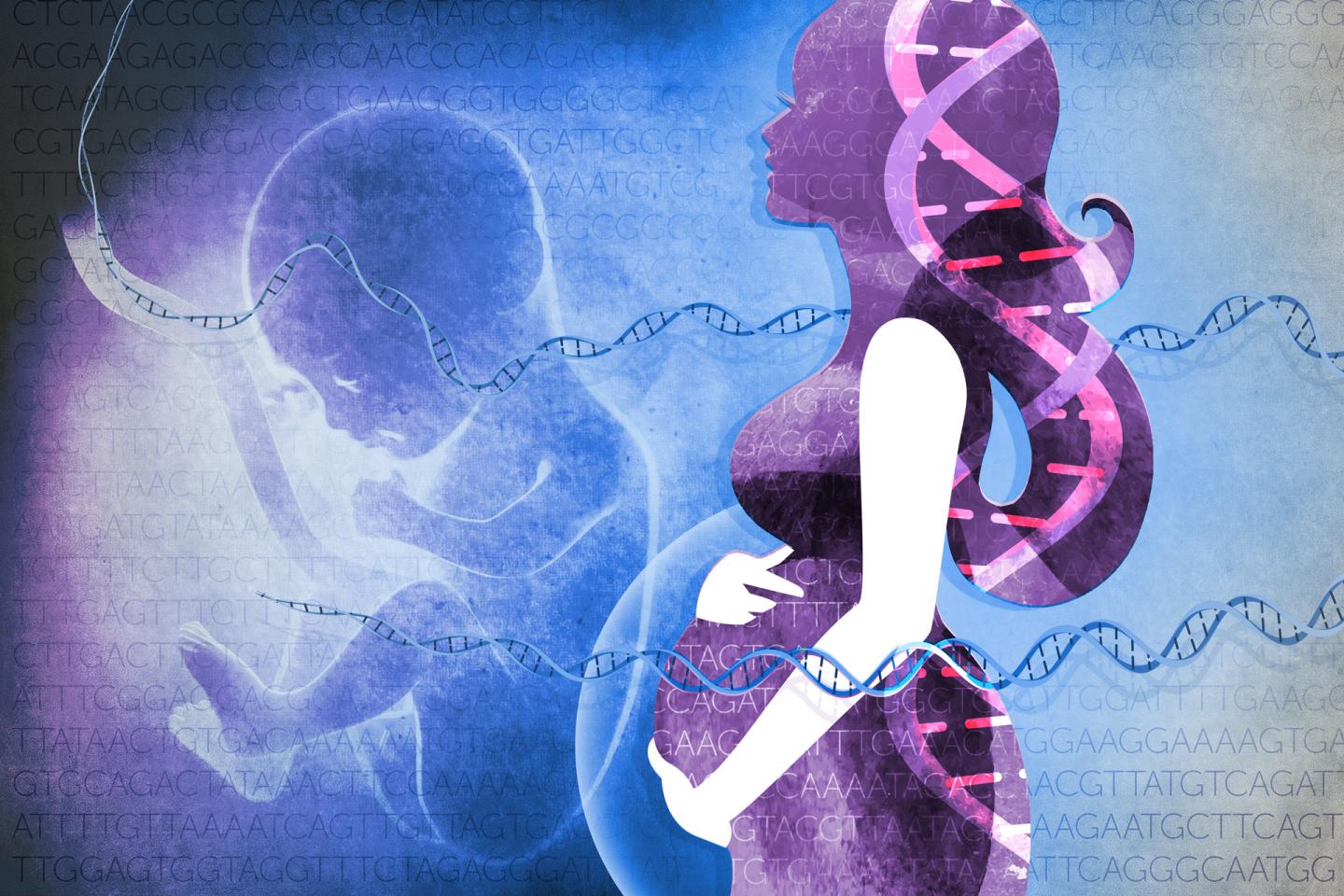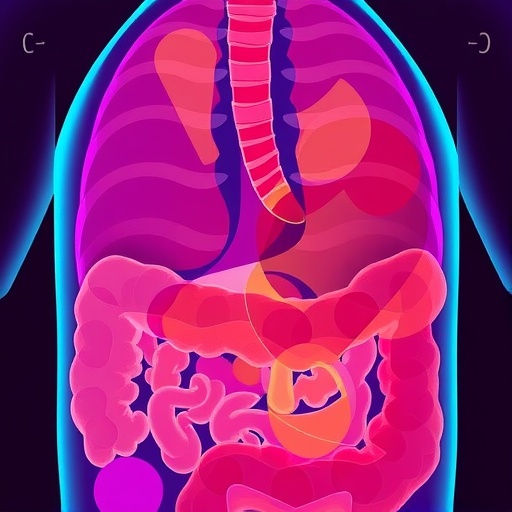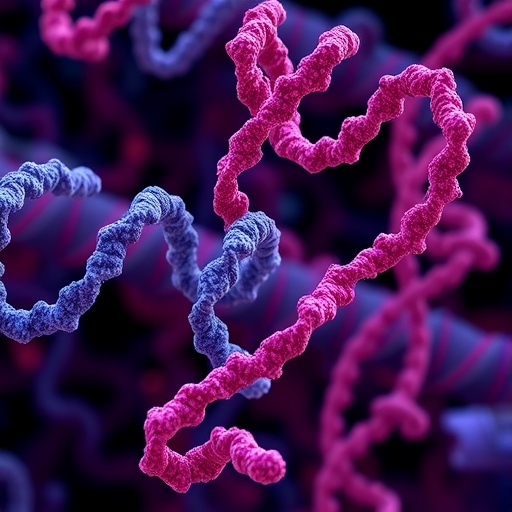
Credit: Ernesto del Aguila III, National Human Genome Research Institute.
Born too soon, she weighed just over 1 pound at birth and spent the first three months of her life in the neonatal intensive care unit, fighting to live. This tiny baby survived under the care of skilled medical professionals and was sent home with her teenage mother. Today, she's a high school student enrolled in a precollege program. But is it possible that she has health risks that relate to her early life experience?
This baby is one example of a frequent and significant problem in the neonatal population – poor growth following premature birth, "a condition for which causes, optimal management and long-term consequences are still not completely understood," said Dr. Marta Fiorotto, associate professor of pediatrics-nutrition and of molecular physiology and biophysics at the USDA/ Children's Nutrition Research Center at Baylor College of Medicine and Texas Children's Hospital, in whose laboratory the research was performed.
Several studies have found a link between fetal malnutrition, low birth weight and low muscle mass and strength throughout life. "It is important to know how muscles are affected in the fetus because we need muscles to breathe, to eat and swallow and to move," Fiorotto said. "If those muscles are compromised in any way during fetal development, those functions are also likely to be compromised in the newborn baby and affect his or her growth."
Malnutrition and stress affect muscle development
Scientists propose that malnutrition and stress are two major environmental factors that affect fetal growth. Interestingly, these two factors expose the fetus to high levels of cortisol, an endogenous glucocorticoid, which is a class of stress steroid hormone.
"Lack of proper nutrition, a form of stress, in an expectant woman raises the levels of cortisol in her blood," said Fiorotto, who also is director of the Mouse Metabolic Research Unit at the USDA/ARS Children's Nutrition Research Center at Baylor and Texas Children's Hospital. "We wanted to know whether it was the lack of proper nutrition during pregnancy itself or the exposure to the associated increases in the levels of glucocorticoids that affected fetal growth. In adults, glucocorticoids have negative effects in the muscles, for instance, they cause atrophy and insulin resistance. Why would the newborn be any different?"
What the studies in rats reveal
Dr. Ganga Gokulakrishnan, a neonatologist at Texas Children's Hospital and assistant professor at Baylor College of Medicine working with Dr. Fiorotto, along with her colleagues investigated how glucocorticoids affect the growth of fetal muscles in the rat.
"You can think of a muscle as a bundle of uncooked spaghetti; each spaghetti is a fiber – a single muscular cell – with many nuclei in a matrix of protein," Gokulakrishnan said. "The number of fibers is already determined by birth and does not increase during postnatal life. So, postnatally, muscles grow by adding both more protein and more nuclei to the fibers. Nuclei are added by muscle stem cells, also called satellite cells, that divide and fuse with the fibers. These muscle stem cells drive muscle growth during fetal development. After puberty, however, the muscles stop accumulating nuclei and grow by adding only protein to the fibers."
Previous studies in rats have shown that exposing fetuses to glucocorticoids impairs muscle growth, and that this is due in part to reduced protein production. In this study, Gokulakrishnan and her colleagues examined the effect of glucocorticoids on the other mechanism of muscle growth, namely the addition of nuclei to the fibers by satellite cells, during early development.
"We were surprised at the magnitude of impairment we observed in the replication of satellite cells in the muscles of fetal rats exposed to glucocorticoids," said Gokulakrishnan. "Taking all the results together, we found that the effect of glucocorticoids on fetal muscle growth is quite complex; it depends on the duration, the level of glucocorticoids and the time during pregnancy when it occurs."
For instance, when the level of stress is mild, such as when the mother's food intake is only approximately 85 percent of normal, protein deposition in muscles of the fetus is affected quite remarkably. However, this mild restriction in food intake does not affect the accumulation of nuclei.
"However, our results from the current study indicate that treating rats with a dose of glucocorticoids that mimics more severe food restriction affects the reserve of satellite cells, the accumulation of nuclei in the fibers, and therefore, muscle growth," Gokulakrishnan said.
The health of future generations starts with the health of the mother.
"In summary, maternal stress, due to malnutrition or other causes that increase the exposure of her fetus to glucocorticoids, can significantly affect the growth of fetal muscles," Gokulakrishnan said. "Conditions such as stress or malnutrition are factors that could be identified and mitigated by prenatal care, once again emphasizing the importance of a proper diet and antenatal care for all pregnant mothers."
"Maternal stress negatively affects the growth of the fetus at the cellular level. This has been demonstrated for other organs, including the brain," said Fiorotto. "We have now learned that, because this is affecting muscle stem cells, it is possible that these negative effects on the fetus could have life-long consequences. This is another example that illustrates how the health of future generations starts with the health of the mother."
This study also brings the effects of glucocorticoids on the fetus into play when considering treating expecting mothers or newborn babies with steroids for a medical condition. In addition, ongoing research is determining whether the deleterious effects on the fetus can be minimized or eliminated by medical intervention after birth.
###
The paper was published in the Journal of Endocrinology.
Xiaoyan Chang and Ryan Fleischmann at Baylor also contributed to this work.
This work is a publication of the USDA/ARS Children's Nutrition Research Center and the Department of Pediatrics at Baylor College of Medicine.
Media Contact
Julia Bernstein
[email protected]
713-798-4710
@bcmhouston
https://www.bcm.edu/news





